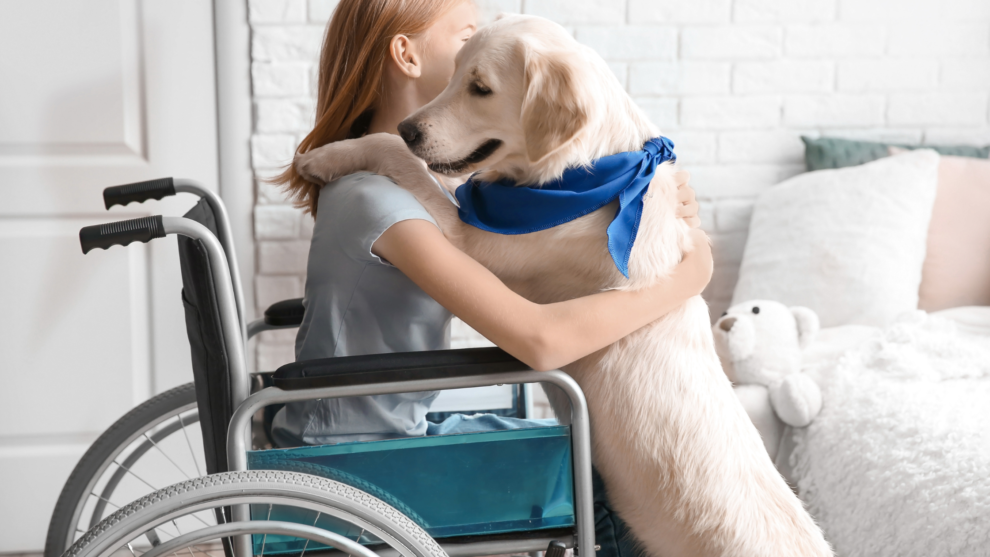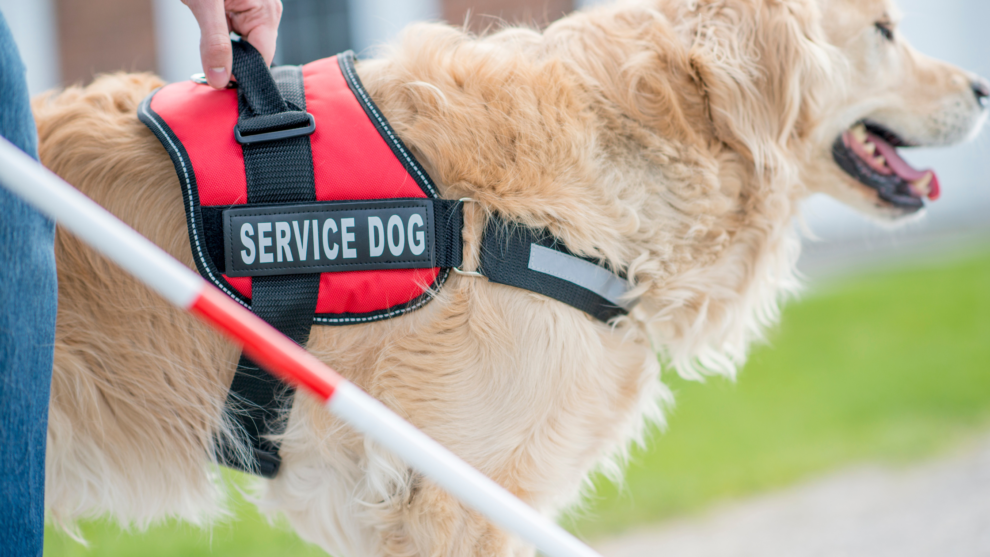Assistance dogs play an indispensable role in our society. They make a big difference every day for people with disabilities or medical conditions. Thanks to their training, they provide support, safety and, most importantly, independence. In this blog you will discover the main roles of assistance dogs and how they make daily life noticeably lighter.
What are service dogs?
Assistance dogs are specially trained dogs that support their owner in everyday life. They help with tasks that a person finds difficult or impossible to perform by themselves. Think of opening doors, indicating objects and alerting in medical emergencies. In addition, they offer emotional support in cases of anxiety, for example. In this way they increase independence, safety and freedom of movement.
Important: service dogs differ from
therapy animals.
Therapy animals primarily provide comfort and companionship and often support multiple individuals, such as in a hospital or care facility.
1. Guide Dogs
Guide dogs help people with visual impairments move safely and independently. They avoid obstacles, monitor walking routes and guide their owner through busy streets and unfamiliar environments. This maintains a person's independence and makes participating in society much more attainable.
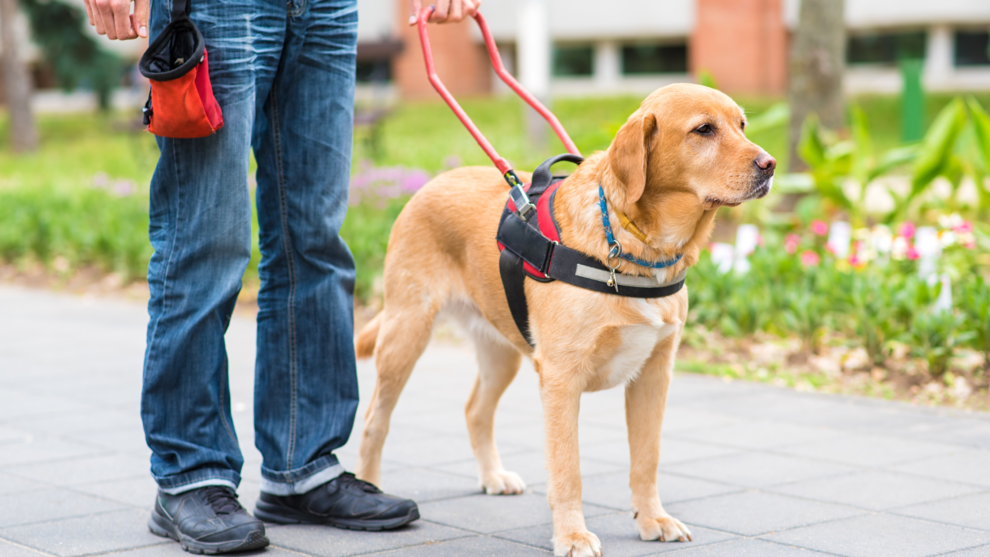
2. Signal Dogs
Signal dogs notice important sounds and alert their owner. For example, they alert to the doorbell, a smoke alarm, a crying baby or when someone calls their name. As a result, the sense of safety grows and independence increases, especially for the deaf and hard of hearing.
3. ADL dogs
ADL dogs (assistance dogs) support people with physical disabilities in general daily activities. They open doors, pick up objects and operate light switches. Sometimes they even help with dressing and undressing. This allows someone with limited mobility to function independently for longer.

4. Autism Support Dogs
These dogs provide calm, structure and support to children and adults with autism. They help cope with stimuli and support in social situations. In addition, they keep their owner safe and warn them in time of possible dangers, for example in traffic.
5. Psychiatric assistance dogs
Psychiatric assistance dogs support mental health conditions such as anxiety disorders, depression or PTSD. They learn to recognize signs of an oncoming panic attack and help calm or distract their owner. They can also maintain a safe distance from others and control spaces, providing immediate peace of mind.
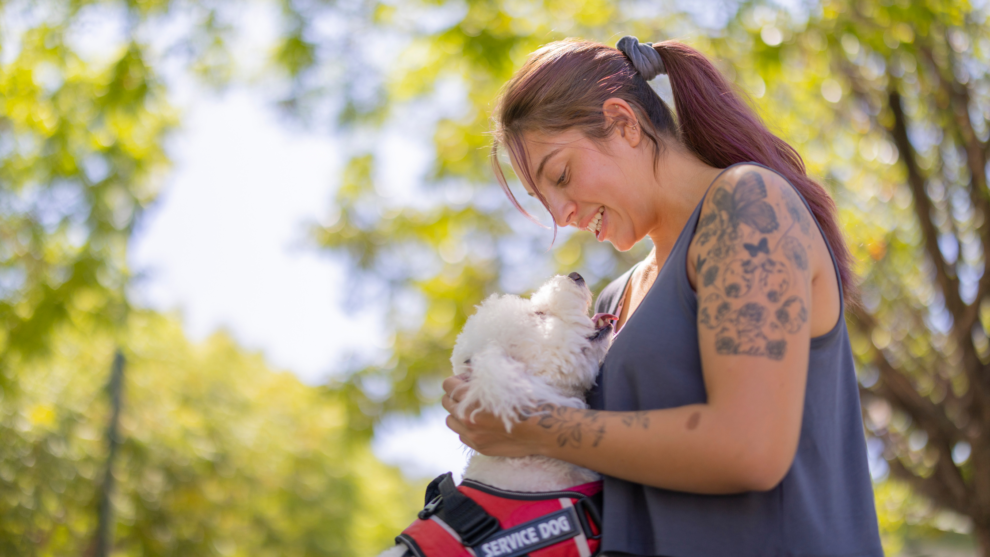
6. Allergy detection dogs
Allergy detection dogs detect specific allergens, such as peanuts or gluten. They recognize even minute amounts in food or in the environment. This allows them to alert their owner in time and help prevent serious reactions.
7. Migraine alert dogs
Some dogs learn to recognize subtle changes in scent and body signals. They alert their owner when a migraine attack is approaching. This creates time to take medication or find a quiet place.
8. Seizure response dogs
Seizure response dogs respond to an epileptic seizure as soon as it begins. They protect their owner from injury, activate an alarm system or bring medication within reach. This makes emergency situations safer and more controlled.
9. Diabetes hypo- and hyperalert dogs
These dogs respond to fluctuations in blood sugar levels. They sound the alarm for both hypo- and hyperglycemia. This gives people with diabetes an extra layer of safety in everyday life.
Training of service dogs
Each assistance dog undergoes training appropriate to the purpose of deployment. As a result, they provide concrete support in daily life.
From puppy to partner
Training starts at an early age. First, puppies get used to stimuli, environments and people. Then trainers build desired behavior step by step with rewards.
Duration and construction
- Socialization: calmness, focus and confidence in a variety of situations.
- Skills by task: opening doors, indicating objects, operating light switches.
- Specializations: odor recognition for allergens or blood sugar, or seizure response.
Training often takes one to two years. This allows sufficient time for the behavior to become reliable and resistant.
Methods of trainers
Trainers work primarily with positive reinforcement. They reward desired behavior immediately. This keeps the dog motivated and he learns faster.
Reliability and certification
During training, trainers test focus, stability and cooperation. Only dogs that perform consistently well eventually receive a certificate.
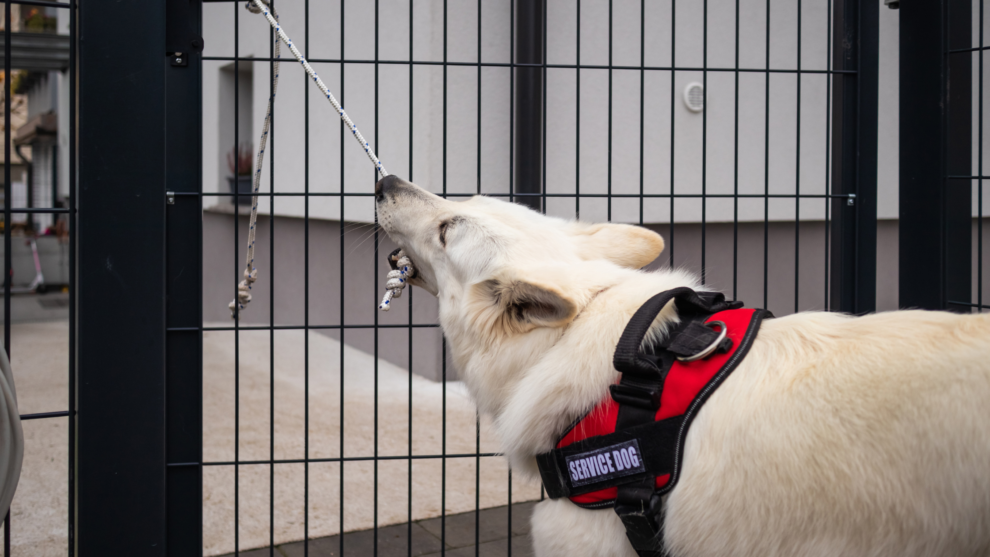
Assistance dogs: more than just assistants
Assistance dogs are loyal partners who improve lives. With their skills and dedication, they increase the safety and independence of their owners. This creates space for a more active, autonomous and happy life. The bond between service dog and owner rests on trust, love and mutual support.
Looking for temporary
dog sitter in your area
or rather a
cat sitter at home?
Through Petbnb, you can find reliable sitters who fit your situation.
